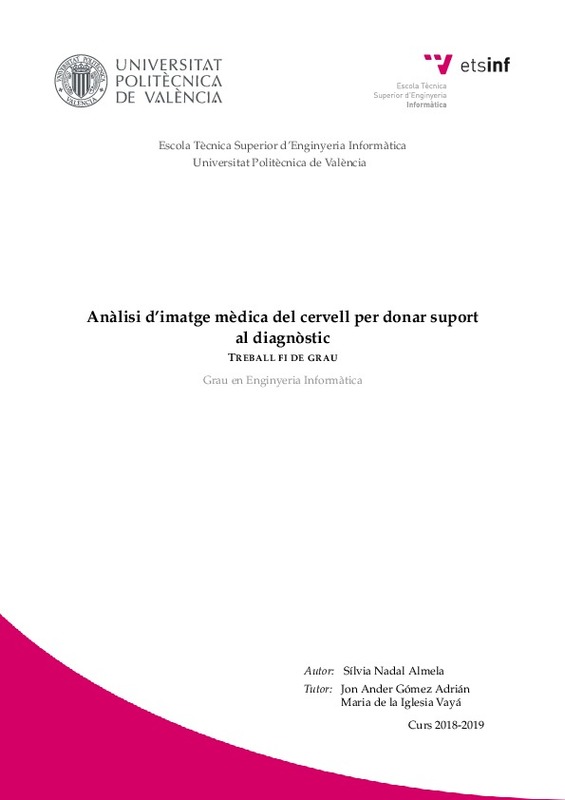JavaScript is disabled for your browser. Some features of this site may not work without it.
Buscar en RiuNet
Listar
Mi cuenta
Estadísticas
Ayuda RiuNet
Admin. UPV
Anàlisi d’imatge mèdica del cervell per donar suport al diagnòstic
Mostrar el registro completo del ítem
Nadal Almela, S. (2019). Anàlisi d’imatge mèdica del cervell per donar suport al diagnòstic. http://hdl.handle.net/10251/126095
Por favor, use este identificador para citar o enlazar este ítem: http://hdl.handle.net/10251/126095
Ficheros en el ítem
Metadatos del ítem
| Título: | Anàlisi d’imatge mèdica del cervell per donar suport al diagnòstic | |||
| Autor: | Nadal Almela, Silvia | |||
| Director(es): | De la Iglesia Vayá, Maria de los Desamparados | |||
| Entidad UPV: |
|
|||
| Fecha acto/lectura: |
|
|||
| Resumen: |
[CA] Durant aquest projecte s’ha treballat amb imatges mèdiques disponibles gràcies a la
col·laboració entre el centre d’investigació Pattern Recognition and Human Language
Technology –PRHLT– i la Fundació per al Foment ...[+]
[ES] Durante este proyecto se ha trabajado con imágenes médicas disponibles gracias a la
colaboración entre el centro de investigación Pattern Recognition and Human Language Technology –PRHLT– y la Fundación para el Fomento ...[+]
[EN] During this project we have worked with medical images that are available thanks to
the collaboration between the research center Pattern Recognition and Human Language
Technology (PRHLT) and the Foundation for the ...[+]
|
|||
| Palabras clave: |
|
|||
| Derechos de uso: | Reserva de todos los derechos | |||
| Editorial: |
|
|||
| Titulación: |
|
|||
| Tipo: |
|
recommendations
Este ítem aparece en la(s) siguiente(s) colección(ones)
-
ETSINF - Trabajos académicos [5160]
Escola Tècnica Superior d'Enginyeria Informàtica







